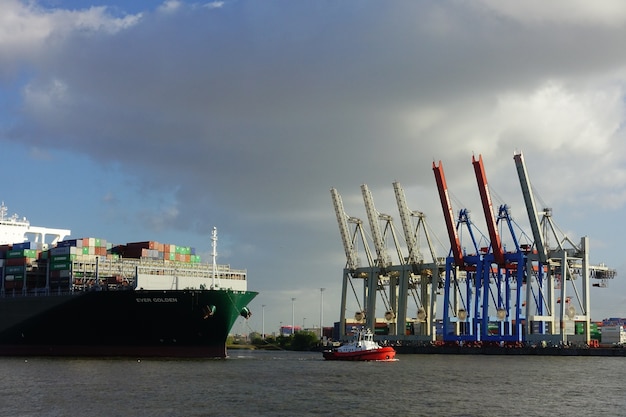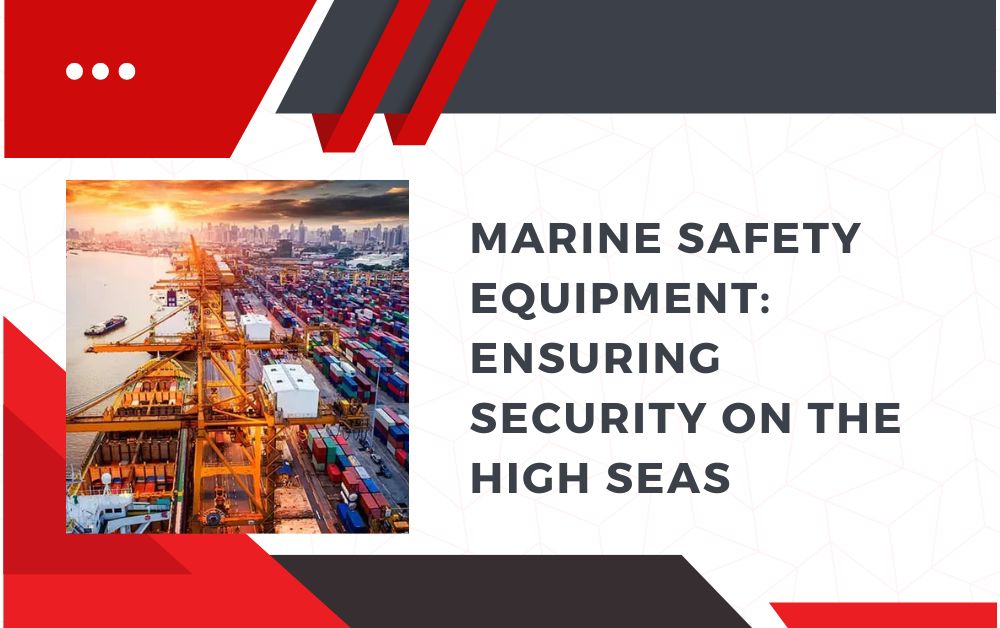Introduction
When it comes to maritime operations, safety is paramount. Marine Safety Equipment serves as a lifeline for seafarers, providing crucial protection against the unpredictable forces of the sea. From life jackets to emergency beacons, these tools are essential for safeguarding lives and vessels in the challenging marine environment. Let’s delve into the world of marine safety equipment, understanding its significance, key components, and how it contributes to ensuring security on the high seas.
Understanding Marine Safety Equipment: A Necessity at Sea
Importance of Marine Safety: The maritime industry presents unique risks and challenges, including rough seas, adverse weather conditions, and the potential for accidents or emergencies. Marine safety equipment is designed to mitigate these risks and provide seafarers with the means to respond effectively to emergencies, ensuring their safety and survival.
Risks at Sea: Seafarers face a myriad of hazards while working at sea, ranging from man-overboard situations and fires onboard to collisions and sinking vessels. Marine safety equipment is essential for addressing these risks and enhancing the chances of survival in emergency situations.
Key Components of Marine Safety Equipment
Life Jackets and Personal Flotation Devices (PFDs): Life jackets are perhaps the most fundamental piece of marine safety equipment, designed to keep individuals afloat in the water and provide buoyancy in case of immersion. Modern PFDs come in various styles and designs, including inflatable vests and buoyancy aids, offering different levels of flotation and comfort.
Emergency Beacons and Signaling Devices: Emergency beacons, such as EPIRBs (Emergency Position Indicating Radio Beacons) and PLBs (Personal Locator Beacons), are critical for alerting search and rescue authorities in the event of an emergency. These devices transmit distress signals and provide precise location information to facilitate swift rescue operations. Additionally, signaling devices such as flares and whistles are essential for attracting attention and signaling distress to nearby vessels or aircraft.
Firefighting Equipment: Fire is a significant threat aboard ships, and firefighting equipment is essential for controlling and extinguishing onboard fires. This includes portable fire extinguishers, fire hoses, firefighting suits, and thermal imaging cameras, allowing crew members to respond promptly to fire incidents and prevent their escalation.

Ensuring Compliance and Preparedness
Regulatory Requirements: The maritime industry is subject to strict regulations and standards governing the use of safety equipment onboard vessels. International conventions such as SOLAS (Safety of Life at Sea) mandate the presence of specific safety equipment and require vessels to undergo regular inspections and drills to ensure compliance with safety standards.
Training and Drills: Proper training and familiarization with marine safety equipment are essential for ensuring its effective use in emergency situations. Crew members must undergo regular safety drills and exercises to familiarize themselves with the operation of safety equipment and the procedures to follow in the event of an emergency.
Innovations in Marine Safety Technology
Advancements in Life-Saving Equipment: The marine safety industry continues to evolve with advancements in technology, leading to the development of innovative life-saving equipment such as self-inflating life rafts, integrated survival suits, and advanced distress beacons with enhanced features such as GPS positioning and satellite communication capabilities.
Integration of Digital Solutions: Digitalization is playing an increasingly significant role in enhancing maritime safety, with the integration of digital solutions such as electronic chart displays, automatic identification systems (AIS), and man-overboard detection systems. These technologies improve situational awareness and facilitate rapid response to emergencies at sea.
Also read our other blog :- Safety Equipment Suppliers in Oman: Ensuring Workplace Safety for All
Conclusion: Protecting Lives at Sea
Marine safety equipment is the cornerstone of safety at sea, providing seafarers with essential tools to navigate the challenges of maritime operations and respond effectively to emergencies. From life-saving flotation devices to firefighting equipment and distress signaling devices, these tools play a crucial role in safeguarding lives and vessels in the unforgiving marine environment. With ongoing advancements in technology and a commitment to regulatory compliance and training, the maritime industry continues to prioritize safety at sea, ensuring that seafarers can operate with confidence and security on the high seas.
Discover a comprehensive exploration from Googlemagazinenews, carefully crafted to offer an in-depth guide into the world of Marine Safety Equipment.

